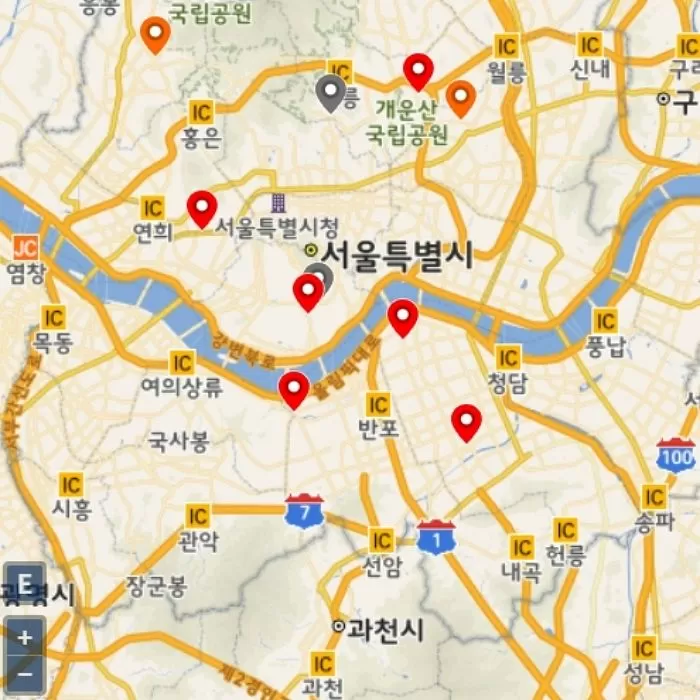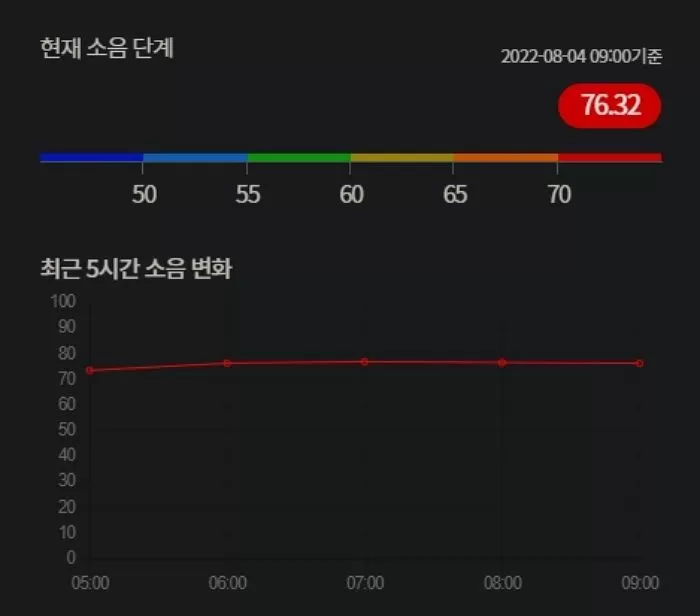
It’s the noise that makes me sleepy at night as much as the heat. These days, when you can’t leave the air conditioner on all night because of worrying about bills, you try to sleep with the window open, but you are often woken up by the noise.
So, where is the most difficult place to sleep in Seoul?

According to the National Noise Information System operated by the Ministry of Environment on August 4, real-time noise is being measured at 10 locations in Seoul.

The most noisy place was 70.55dB in front of Hotel C in Itaewon-dong, Yongsan-gu, at 4 am in the morning.
This is higher than 68.34dB in front of K Bank in Jongam-dong, Seongbuk-gu, 67.17dB in Bukahyeon-dong, Seodaemun-gu, 67.76dB in S Building in Apgujeong-dong, Gangnam-gu, and 67.14dB in front of S Girls’ High School in Dogok-dong, Gangnam-gu.
Even at 8 am, in front of Hotel C in Itaewon-dong, Yongsan-gu, it was 76.67dB, the highest among the 10 places in Seoul that are measuring noise in real time.
70 dB is similar to a phone ringing noise. In other words, in front of Hotel C in Itaewon-dong, Yongsan-gu, it is like a phone ringing all day long.
According to the Ministry of Environment, noise levels in major cities nationwide based on non-road general residential areas are 52 to 57 dB during the day and 48 to 50 dB at night.

According to the Environmental Policy Framework Act of the Ministry of Environment, the standard of standing noise in residential areas along main roads is 65 dB during the day and 55 dB at night. In general residential areas, it is 55 dB during the day and 45 dB at night. The noise level in major areas of Seoul at night far exceeds this level.
Night noise is not only unpleasant but also bad for your health. High exposure to night noise increases the risk of male infertility and affects gestational diabetes.
According to the ‘2022 Frontier Report’ published by the United Nations Environment Program (UNEP) in February, one in five EU citizens is affected by noise pollution. In the EU alone, 12,000 people die prematurely each year from noise pollution.


